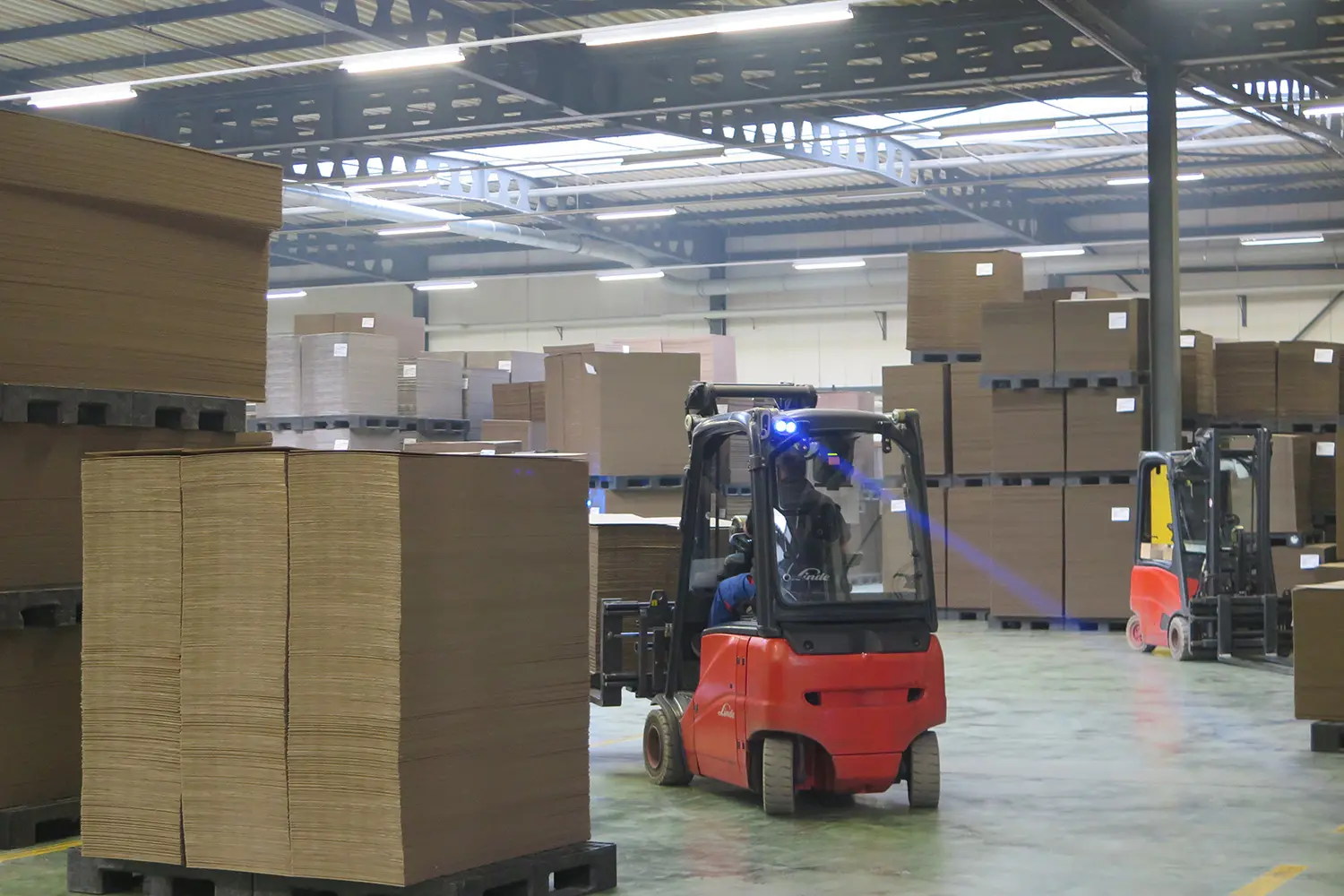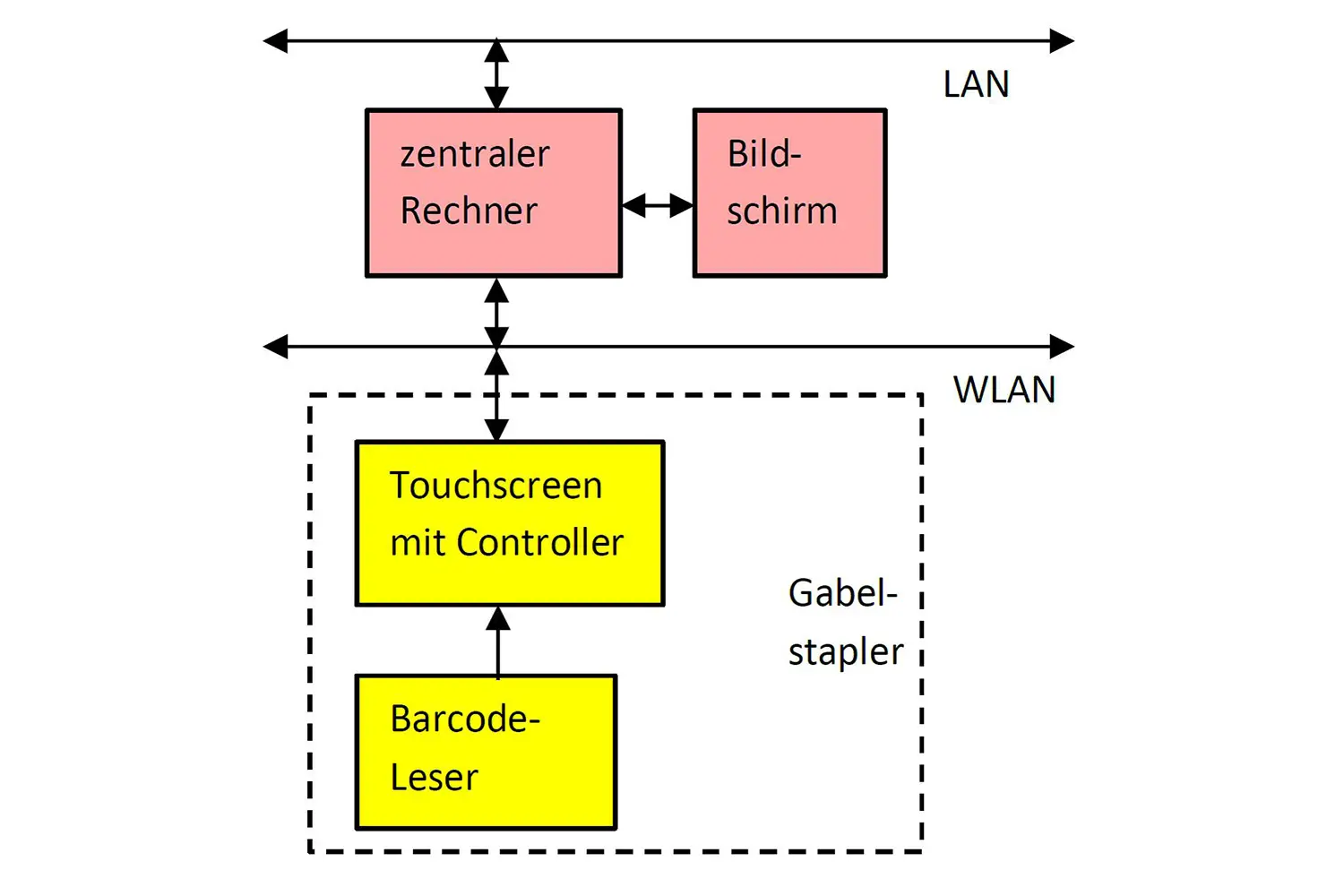Students automate warehouse
Large warehouses can be very confusing, so locating the correct pallet of goods can be rather complicated. Two mechanical engineering students at the ZHAW School of Engineering tackled this problem in a practical project: they developed an automation system that enables goods in warehouses to be located very quickly.
The Model AG company in Weinfelden produces large quantities of various types of corrugated cardboard sheets. The sheets are automatically palletised, tagged with an order slip and brought by forklift to an interim storage facility for drying. When the cardboard is dry, it is transported to other facilities for further processing. «Until now, we never recorded the exact location of each pallet in interim storage», says Edoardo Finotti, production manager at Model AG. «As a result, it sometimes took a rather long time to locate the goods.» This lack of efficiency can be corrected thanks to the new automation system, which Simon Furrer and Jan Züllig have developed in their practical project at the ZHAW School of Engineering. The two mechanical engineering students received support from the Institute of Mechatronic Systems (IMS).
Partial rather than full automation
The students analysed the situation and determined the system requirements for flexible operation in the warehouse. «A coordinate system is laid out on the warehouse floor, and the forklifts are equipped with barcode readers and touchscreens», explains Simon Furrer. The forklifts communicate with a central computer through Wi-Fi. Whenever a palette is loaded, the relevant order data are recorded by barcode. When the palette is deposited in the warehouse, the forklift driver selects a suitable location and enters its coordinates on his screen. This information is transferred to a central computer which keeps an account of the stock and indicates the warehouse occupancy. When the goods are collected, the forklift driver can use the touchscreen to look up the coordinates of the palette as well as its next destination for further processing.
Nothing stands in the way of implementation
«The advantage of this partially automated solution is that the forklift drivers retain an active role in it», says Jan Züllig. «It enables the pallets to be stored in a practical way and located quickly by any warehouse clerk, thanks to the coordinates.» There is nothing standing in the way of this lean automation concept’s implementation. The students have already selected the suitable components and determined the costs. «It is anticipated that this implementation will pay for itself in three years», says Edoardo Finotti from Model AG. «The automation system will facilitate the work of our forklift drivers and accelerate the processing of goods.» Thus, this student project will enable Model AG to close one of the last gaps in its largely automated corrugated cardboard production.

